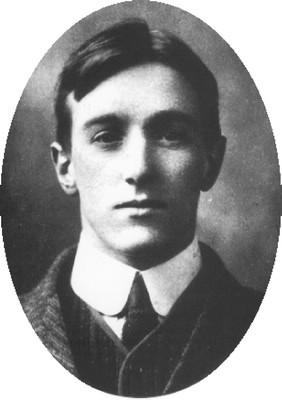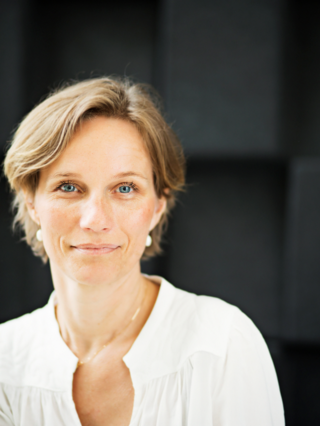Related Research Articles

Calleva Atrebatum was an Iron Age oppidum,the capital of the Atrebates tribe. It then became a walled town in the Roman province of Britannia,at a major crossroads of the roads of southern Britain.

Robin George Collingwood was an English philosopher,historian and archaeologist. He is best known for his philosophical works,including The Principles of Art (1938) and the posthumously published The Idea of History (1946).

The Circus of Maxentius is an ancient structure in Rome,Italy,part of a complex of buildings erected by emperor Maxentius on the Via Appia between AD 306 and 312. It is situated between the second and third miles of the Via Appia,between the basilica and catacombs of San Sebastiano and the imposing late republican tomb of Caecilia Metella,which dominates the hill that rises immediately to the east of the complex. It is part of the Appian Way Regional Park.
Patricia Southern is an English historian of classical Rome.
Calceology is the study of footwear,especially historical footwear whether as archaeology,shoe fashion history,or otherwise. It is not yet formally recognized as a field of research. Calceology comprises the examination,registration,research and conservation of leather shoe fragments. A wider definition includes the general study of the ancient footwear,its social and cultural history,technical aspects of pre-industrial shoemaking and associated leather trades,as well as reconstruction of archaeological footwear.

The Warrior of Capestrano is a tall limestone statue of a Picene warrior,dated to around the 6th century BC. The statue stands at around 2.09 m. It was discovered accidentally in 1934 by a laborer ploughing the field in the Italian town of Capestrano,along with a female statue in civilian attire,called Lady of Capestrano.

Eleanor Scott is a British archaeologist and politician. She founded the Theoretical Roman Archaeology Conference (TRAC) in 1991.
Lindsay Allason-Jones,is a British archaeologist and museum professional specialising in Roman material culture,Hadrian's Wall,Roman Britain,and the presence and role of women in the Roman Empire. She is currently a visiting fellow at Newcastle University.
Penelope 'Pim' Allison academic archaeologist specialising the Roman Empire and since 2015 has been professor of archaeology at the University of Leicester. She is also a Fellow of the Society of Antiquaries and an Honorary Fellow of the Australian Academy of the Humanities.

The Theoretical Roman Archaeology Conference (TRAC) is an academic organisation and conference which was designed to be an arena for open discussion of archaeological theory in Roman archaeology.
Ellen Swift is a British archaeologist and Professor of Roman Archaeology at the University of Kent.
Kevin Greene is a British classical archaeologist. He was a reader at Newcastle University until his retirement,and is now a visiting fellow in the School of History,Classics and Archaeology. He was elected a Fellow of the Society of Antiquaries of London in January 1981.
Valerie Maxfield FSA is a Roman archaeologist and emeritus Professor of Archaeology at the University of Exeter. She is a specialist in the archaeology of the Roman army and frontiers,and edited the Proceedings of the Devon Archaeological Society until December 2020.

Zena Kamash FSA is a British Iraqi archaeologist and senior lecturer at Royal Holloway,University of London. Her research topics include water,food,memory,the Roman period in the Middle East and Britain.
Louise Revell is a Roman archaeologist,currently Associate Professor in Roman Studies at the University of Southampton. Revell's research focuses on provincial archaeology of the Western Roman Empire.
Andrew Gardner is an archaeologist working in the areas of Roman archaeology and archaeological theory.

Marie-Louise Bech Nosch is a Professor in the University of Copenhagen and an expert in the interdisciplinary study of prehistoric textiles. Her main research focus is on the evidence for textile production in Mycenaean Greece provided by the Linear B tablets;she has also published widely on the cross-cultural study of textiles from across the ancient Mediterranean and Near East.
Fleur Kemmers is the Lichtenberg Professor for Coinage and Money in the Graeco-Roman World at Goethe University,Frankfurt.
Nina Crummy is a British archaeologist and artefact specialist,especially of Roman material culture.
Eleri H Cousins is an archaeologist and Lecturer in Roman History at the University of Lancaster.
References
- 1 2 3 Breeze 2018, p. x.
- ↑ "ROMEC". ARMES. 2015-10-07. Retrieved 2019-06-28.
- ↑ Breeze 2018, p. x–xi.
- ↑ Rush 1995, p. xi.
- ↑ Carruthers et al. 2002, p. iv.
- ↑ "Embracing the Provinces". www.oxbowbooks.com. Retrieved 2019-06-28.
- Bibliography
- Breeze, David (2018), "Carol van Driel-Murray: an appreciation", in Ivleva, Tatiana; de Bruin, Jasper; Driessen, Mark (eds.), Embracing the Provinces: Society and Material Culture of the Roman Frontier Regions, Oxford: Oxbow Books, pp. x–xi, doi:10.2307/j.ctv13nb8qs.6, ISBN 9781789250152, JSTOR j.ctv13nb8qs.6, S2CID 240296827
- Carruthers, Martin; van Driel Murray, Carol; Gardner, Andrew; Lucas, Jason; Revell, Louise; Swift, Ellen (2002), "Preface", in Carruthers, Martin; van Driel Murray, Carol; Gardner, Andrew; Lucas, Jason; Revell, Louise; Swift, Ellen (eds.), TRAC 2001: Proceedings of the Eleventh Annual Theoretical Roman Archaeology Conference, vol. 11, pp. iv, doi: 10.16995/TRAC2001_i_iv
- Rush, Peter (1995), "Introduction", in Rush, Peter (ed.), Theoretical Roman Archaeology: Second Conference Proceedings, vol. 2, pp. xi–xiii, doi: 10.16995/TRAC1992_i_xiii